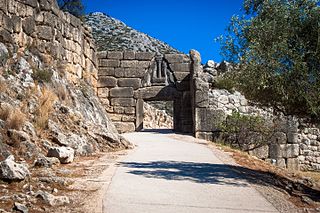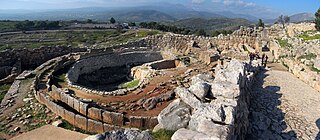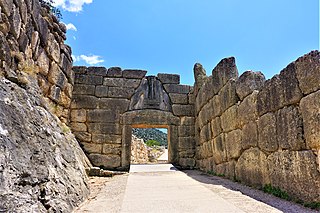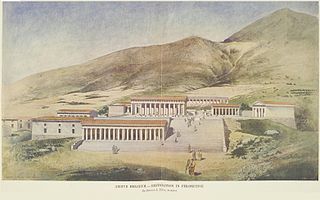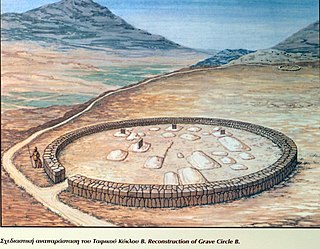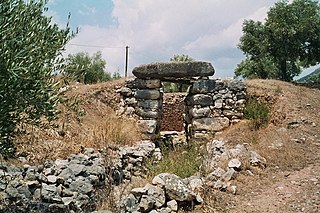6 Sights in Municipal Unit of Mykines, Greece (with Map and Images)
Legend
Welcome to your journey through the most beautiful sights in Municipal Unit of Mykines, Greece! Whether you want to discover the city's historical treasures or experience its modern highlights, you'll find everything your heart desires here. Be inspired by our selection and plan your unforgettable adventure in Municipal Unit of Mykines. Dive into the diversity of this fascinating city and discover everything it has to offer.
1. Mycenae
Mycenae is an archaeological site near Mykines in Argolis, north-eastern Peloponnese, Greece. It is located about 120 kilometres south-west of Athens; 11 kilometres north of Argos; and 48 kilometres south of Corinth. The site is 19 kilometres inland from the Saronic Gulf and built upon a hill rising 900 feet above sea level.
2. Grave Circle A
Grave Circle A is a 16th-century BC royal cemetery situated to the south of the Lion Gate, the main entrance of the Bronze Age citadel of Mycenae in southern Greece. This burial complex was initially constructed outside the walls of Mycenae and ultimately enclosed in the acropolis when the fortification was extended during the 13th century BC. Grave Circle A and Grave Circle B, the latter found outside the walls of Mycenae, represents one of the significant characteristics of the early phase of the Mycenaean civilization.
3. Lion Gate
The Lion Gate is the popular modern name for the main entrance of the Bronze Age citadel of Mycenae in Southern Greece. It was erected during the thirteenth century BC, around 1250 BC, in the northwestern side of the acropolis. In modern times, it was named after the relief sculpture of two lions or lionesses in a heraldic pose that stands above the entrance.
4. Argive Heraion
The Heraion of Argos is an ancient sanctuary in the Argolid, Greece, dedicated to Hera, whose epithet "Argive Hera" appears in Homer's works. Hera herself claims to be the protector of Argos in Iliad IV, 50–52): "The three towns I love best are Argos, Sparta and Mycenae of the broad streets". The memory was preserved at Argos of an archaic, aniconic pillar representation of the Great Goddess. The site, which might mark the introduction of the cult of Hera in mainland Greece, lies northeast of Argos between the sites of Mycenae and Midea, two important Mycenaean cities. The traveller Pausanias, visiting the site in the 2nd century CE, referred to the area as Prosymna (Προσύμνη).
5. Ταφικός κύκλος B΄
Grave Circle B in Mycenae is a 17th–16th century BCE royal cemetery situated outside the late Bronze Age citadel of Mycenae, southern Greece. This burial complex was constructed outside the fortification walls of Mycenae and together with Grave Circle A represent one of the major characteristics of the early phase of the Mycenaean civilization.
6. Τάφος Επάνω Φούρνου
Tomb of Epano Phournos is called a tholos tomb in Mycenae. The tomb was named after the site of the same name, which in turn was named after the Tholos tomb itself, which the farmers used to call Phournos. The Tholos Tomb is located on the western slope of Panagitsa Hill about 450 m west of the upper town of Mycenae. According to Alan Wace's classification, it belongs to the first Tholos group and dates to the Late Helladic period. It was built around 1500 BC and, together with the Cyclopean tomb, is one of the oldest tholos tombs near Mycenae. Since the grave is in acute danger of collapsing, access has been blocked.
Share
How likely are you to recommend us?
Disclaimer Please be aware of your surroundings and do not enter private property. We are not liable for any damages that occur during the tours.
